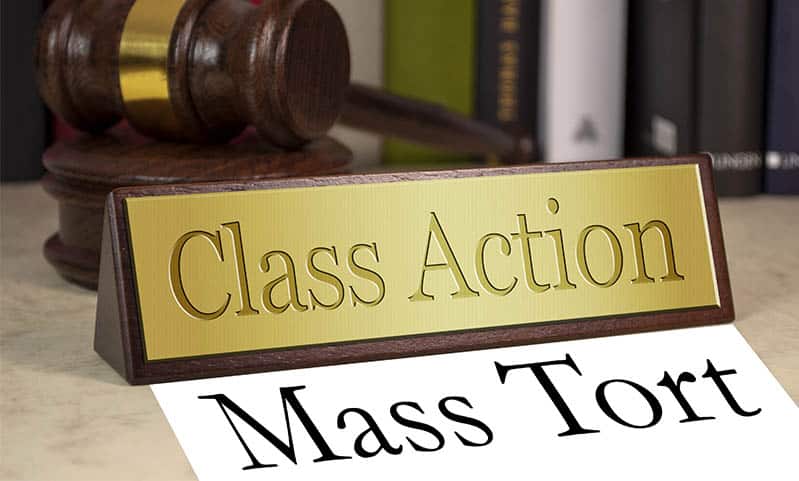Legal Advocacy Revealed: Your Go-To Source for Class Action Lawsuit Info
Wiki Article
Understanding Class Action Lawsuit: An Overview for Lawyers
Class action suits have become an integral component of the lawful landscape, enabling the consolidation of numerous cases into a single activity. For lawyers, comprehending the intricacies of class activity lawsuits is critical in efficiently representing their clients. This comprehensive guide explores the basics of course action suits, from identifying prospective course members to navigating the accreditation process. In addition, it digs right into crucial techniques for taking care of class activity lawsuits and gives understandings into acquiring and discussing approval for negotiations. By delving into the ins and outs of class action suits, this overview furnishes attorneys with the expertise and devices needed to successfully navigate this intricate location of regulation.The Essentials of Course Activity Legal Actions
Class activity lawsuits are a legal system employed to combine comparable claims from a team of individuals right into a solitary claim, giving a reliable and affordable method to seeking justice and resolution. This sort of claim enables a depictive plaintiff, acting upon part of the entire class, to bring an insurance claim versus an offender who has presumably caused injury or broke the civil liberties of multiple people.The fundamental requirements for bringing a class action suit consist of numerosity, commonness, typicality, and adequacy of representation. Numerosity refers to the fact that the class should be so large that joinder of all members would certainly be unwise. Commonness indicates that there have to prevail questions of legislation or truth that are shared by all participants of the course. Typicality requires that the insurance claims of the depictive plaintiff are normal of the claims of the entire course. Adequacy of representation guarantees that the depictive plaintiff will appropriately stand for the passions of the entire course.
Course action suits can be advantageous for both offenders and plaintiffs. For complainants, it enables them to merge their resources and share the risks and expenses connected with lawsuits. It also offers an equal opportunity when they are up versus huge companies or entities. For accuseds, it provides the chance to efficiently fix multiple insurance claims in a solitary legal action, avoiding the demand to defend against many individual suits.
Identifying and Assessing Potential Course Participants
After developing the fundamental requirements for a class action suit, the following step is to determine and analyze possible class participants. If they satisfy the needed standards., this procedure involves determining who may be part of the class and assessing their insurance claims to establish.To recognize possible course participants, legal representatives usually carry out considerable study and collect pertinent details. This might include examining papers, carrying out interviews, and analyzing records to identify individuals or entities that might have been influenced by the claimed misdeed. It is vital to establish a clear and detailed list of potential course participants to make sure that all impacted events are consisted of in the claim.
Once possible class participants have been identified, the following step is to analyze their insurance claims. If they satisfy the legal demands for course accreditation, this entails examining the merits of each individual case to identify. Legal representatives should thoroughly evaluate the realities, evidence, and legal concepts of each potential class participant's claim to make sure that they have a viable situation.
Assessing prospective course participants likewise entails determining whether they satisfy the course definition and have endured similar injury as a result of the defendant's actions. This needs contrasting the facts and situations of each prospective course participant's situation to the accusations and lawful concepts placed forth in the lawsuit.
Navigating the Class Qualification Refine
To successfully navigate the class accreditation procedure, legal representatives must vigilantly follow the step-by-step needs established forth by the court. Class certification is an essential action in a course action lawsuit, as it identifies whether a situation can proceed as a class action, standing for a team of individuals who have similar insurance claims versus an offender. The procedure entails pleasing details criteria, such as numerosity, commonality, typicality, and adequacy of representation.Firstly, attorneys need to establish numerosity by demonstrating that the class is so large that private joinder is impractical. This can be achieved through proof or specialist statement. They should establish commonality by revealing that there are typical questions of law or reality that predominate over specific problems. This requires a comprehensive evaluation of the defenses and claims involved.
Following, attorneys must reveal typicality, which implies that the depictive plaintiff's claims are normal of the claims of the course members. This ensures that the rate of interests of the depictive plaintiff straighten with the rate of interests of the course. Legal representatives must show competence of representation, indicating that the representative plaintiff and their advise will fairly and appropriately represent the rate of interests of the class.
To navigate this procedure successfully, attorneys have to completely prepare by performing comprehensive research study, collecting proof, and developing an engaging argument that pleases each of these requirements. They should also be prepared to react to any Check Out Your URL difficulties or arguments increased by the accused. By faithfully adhering to the procedural requirements stated by the court, lawyers can enhance their possibilities of getting course qualification and advancing the interests of the class members.

Key Methods for Managing Class Activity Litigation
Upon efficiently navigating the class qualification process, attorneys have to then carry out key techniques for properly managing class activity litigation. These techniques are vital to ensure that the situation continues efficiently and efficiently, eventually maximizing the chances of a positive end result for the class members.
One key method is to develop a cohesive and strong lawful group (Class action lawsuit). This entails assembling a group of attorneys with know-how in course activity litigation, as well as other appropriate locations such as the certain sector or subject involved in the case. A well-rounded team can bring different point of views and abilities to the table, improving the total performance of the lawsuits
An additional crucial method is to create a thorough and well-balanced litigation strategy. This plan ought to describe the overall objectives of the case, along with the details lawful concepts and disagreements that will be pursued. It needs to additionally consist of a timeline and budget plan to guarantee that the case remains on track and within the assigned sources.
Furthermore, lawyers should proactively engage with the class participants throughout the litigation process (Class action lawsuit). This consists of supplying regular updates on the progression of the situation, seeking input and responses from the course members, and resolving any type of questions or problems they may have. By fostering open interaction and collaboration, legal representatives can index develop count on and assistance among the course members, which can be crucial in accomplishing an effective resolution
Clearing Up Class Activity Lawsuits: Settlement and Approval
When it pertains to settling course activity suits, reliable settlement and getting approval are crucial steps in attaining a resolution. Class activity lawsuits are complicated and entail a large number of complainants, making it crucial to reach a negotiation that is satisfactory and fair to all events involved.
As soon as a negotiation agreement is reached, it should be authorized by the court. The court's function in this process is to make sure that the negotiation is reasonable, practical, and adequately safeguards the rate of interests of the class members. The court will think about aspects such as the nature of the insurance claims, the stamina of the proof, the prospective healing for the course members, and any type of objections increased by class members.
Obtaining court approval is crucial as it provides finality to the negotiation and protects the interests of the class participants. It makes certain that the negotiation is binding and enforceable, and course participants can get their rightful settlement.
Final Thought

Course action legal actions have become an indispensable part of the legal landscape, enabling for the debt consolidation of multiple cases into a solitary action. Course certification is an essential step in a course action legal action, as it identifies whether a situation can continue as a course action, standing for a group of people who have comparable insurance claims versus a defendant. By faithfully adhering to the step-by-step demands established forth by the court, attorneys can raise their chances of getting class accreditation and progressing the interests of the class participants.
The court will think about variables such as the nature of the claims, the stamina of the proof, the potential healing for the course participants, and any objections elevated by course members.
By determining and examining possible class members, attorneys can establish More about the author the viability of a class action claim.
Report this wiki page